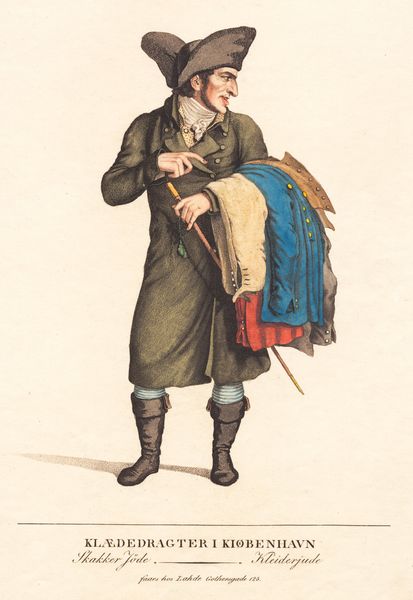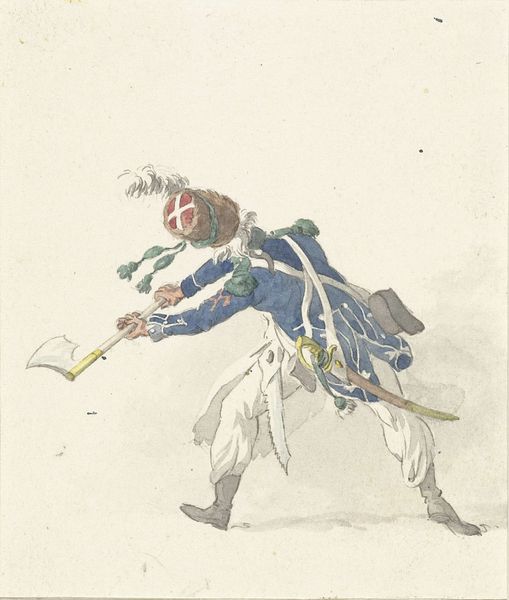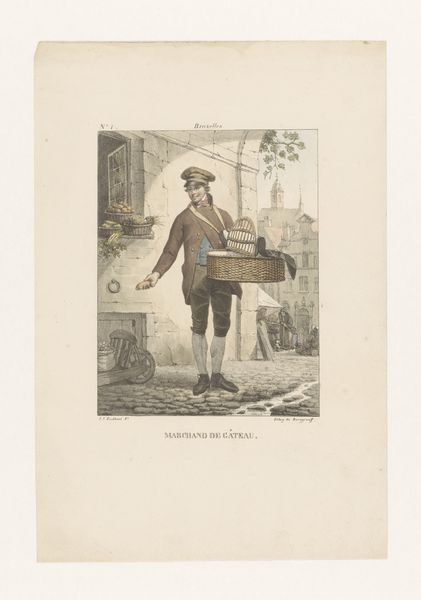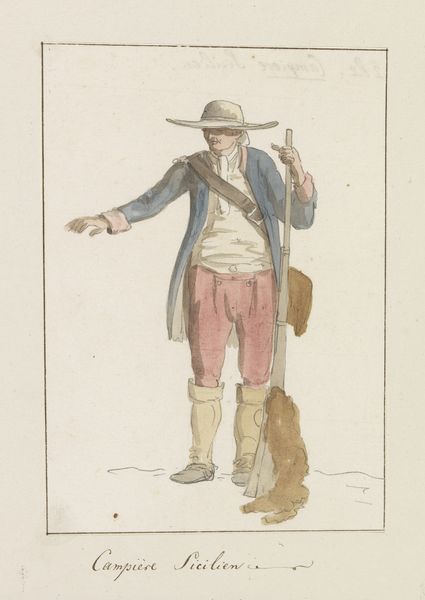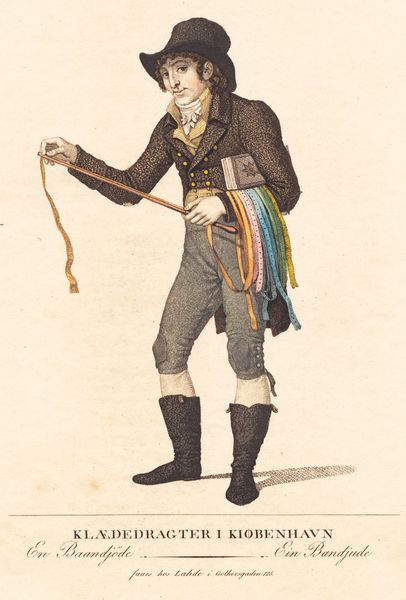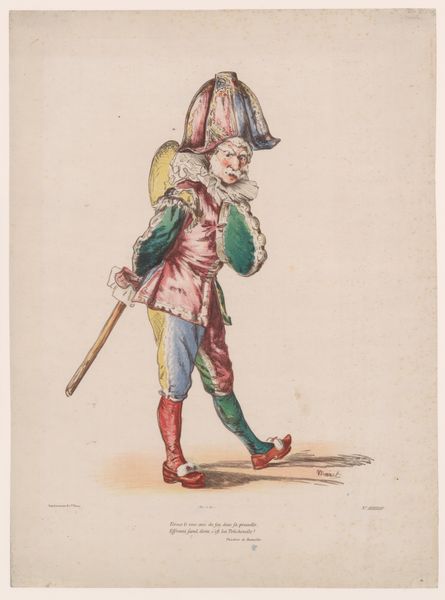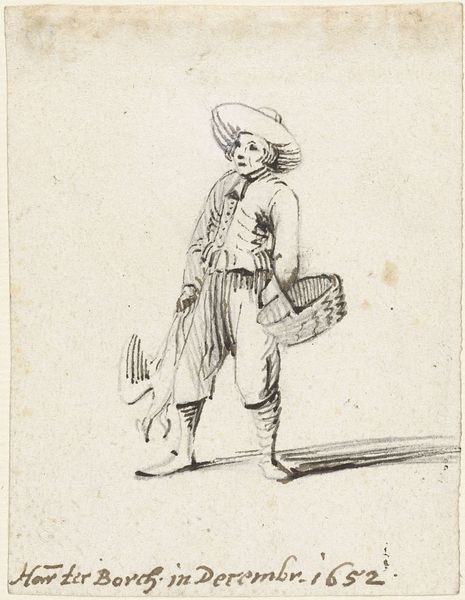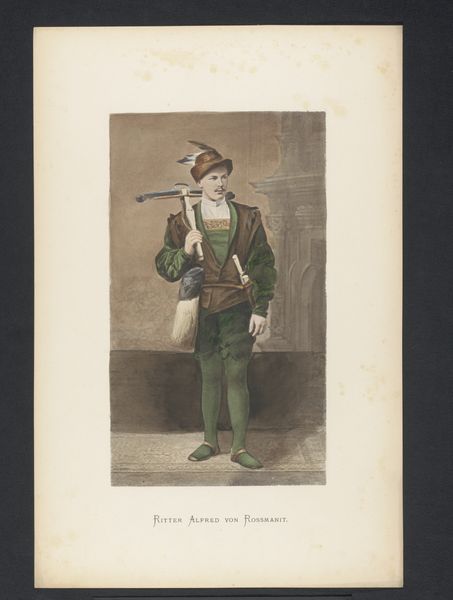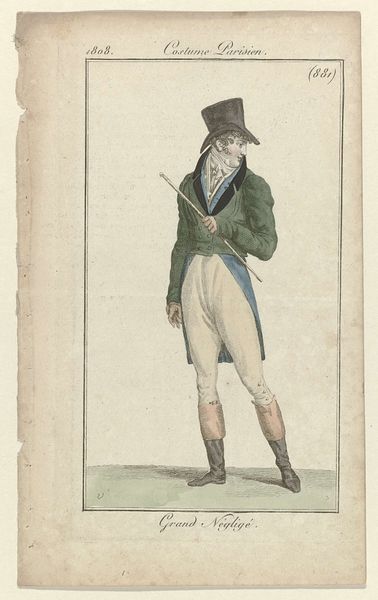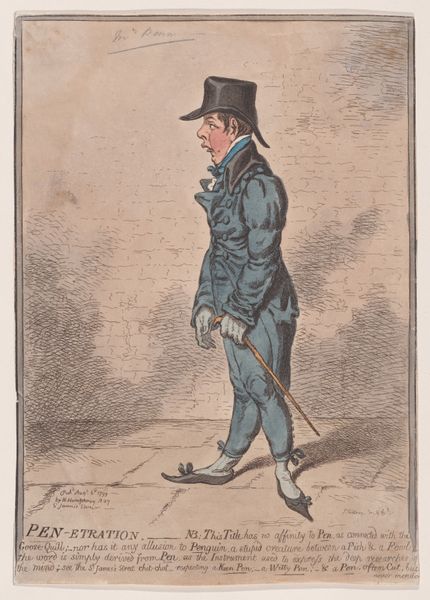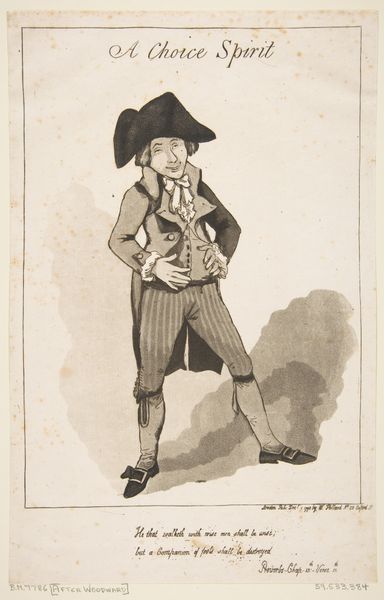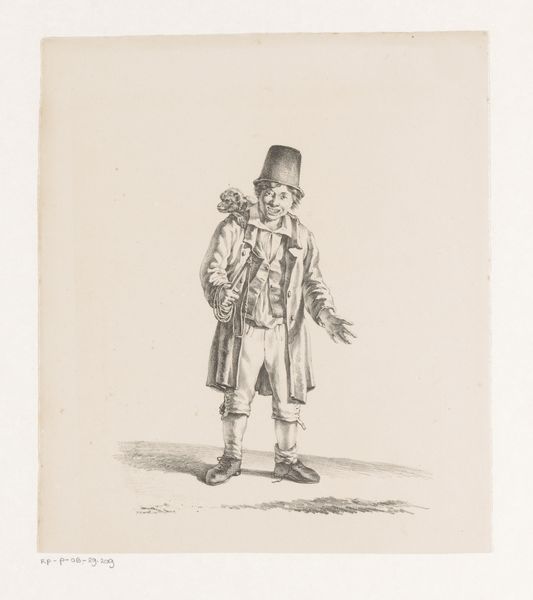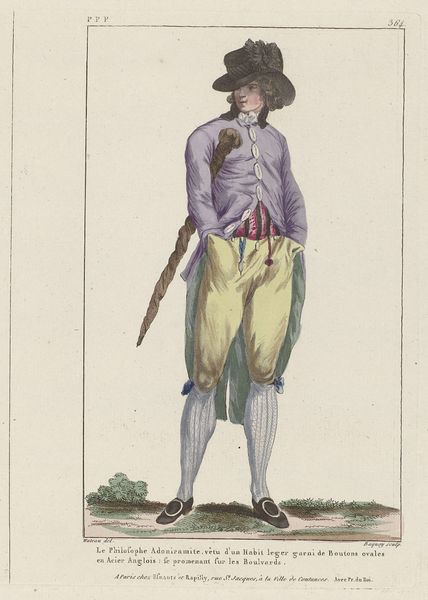
painting, watercolor
#
portrait
#
painting
#
watercolor
#
coloured pencil
#
watercolour illustration
#
genre-painting
#
academic-art
Dimensions: 26.5 x 20.6 cm
Copyright: Public domain
Curator: Our attention is drawn to "Gioncataro," an artwork traced back to 1820. Its visual components suggest the skillful application of watercolour and coloured pencil. Editor: My first thought is the sheer economy of line! The artist captures the figure with such breezy, understated elegance. It feels light, almost ephemeral. Curator: Agreed. Note how the composition hinges on the contrast between the figure’s detailed features and the almost absent background. The chromatic restraint focuses the viewer's gaze entirely on the represented person. Editor: It's tempting to analyze this work through the lens of its probable audience. The details in dress and occupation offer insight into social stratification and representation in 19th-century Italy. Do you get the impression this was commissioned, perhaps to document a specific tradesperson? Curator: It could also be interpreted as a visual exercise in capturing the play of light. See how it renders textures—the woven basket, the furry waistcoat. Academic, maybe? The style speaks of precision rather than a specific social statement. Editor: Interesting thought. To me, the genre-painting quality invites discussion about the role of art institutions in shaping public perceptions. Consider the artist’s implicit biases, and the power dynamics at play when rendering an ordinary man with an idealized brush. Curator: Perhaps. Yet I find the internal consistency—the perfect accord between medium, line, and chromatic balance—to be its dominant characteristic. It is formally engaging beyond any anecdotal aspect it presents. Editor: Indeed. Contemplating the work further reveals layers beyond its simple, surface portrayal of everyday life. Its subtle encoding of social and historical contexts demands closer scrutiny. Curator: Ultimately, regardless of societal implications, "Gioncataro" showcases a brilliant demonstration of artistic means brought to bear upon observed form. Editor: Absolutely. It has certainly prompted me to ponder how historical documentation intersects, often unconsciously, with subjective perspectives on representation.
Comments
No comments
Be the first to comment and join the conversation on the ultimate creative platform.
